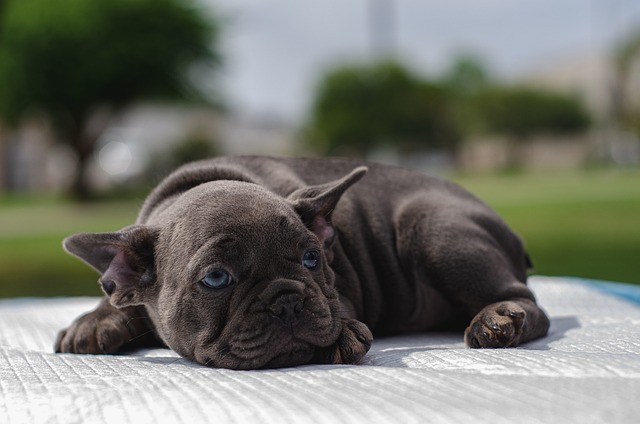
What is glaucoma in a dog?
You might notice your dog squinting more at mealtime or avoiding bright sunlight—these small changes could be early signs of a serious eye condition.
Bulldogs’ wrinkly faces and squishy folds are part of what makes them so lovable, but those same folds can trap moisture, dirt, and bacteria—leading to redness, irritation, or even infections. Keeping them healthy takes a little know-how, but it’s totally doable with consistent care.
Start with daily checks. Run your fingers gently through each fold, especially around the nose, mouth, and neck. Look for signs of dampness, a yeasty smell, or tiny red bumps. Catching these early stops small issues from turning into big ones. After walks or playtime, wipe folds with a soft, damp cloth—warm water works, but avoid scrubbing. Pat dry thoroughly; moisture is the biggest troublemaker here.
Choosing the right products matters. Skip human lotions or soaps—they can throw off your bulldog’s skin pH and might not meet local pet product guidelines. Opt for mild, fragrance-free cleansers made specifically for dogs, ones that list ingredients clearly. A quick check with your vet can help pick something safe and effective, which matters because some regions have strict rules about what’s allowed on pets.
 If you notice swelling, oozing, or your bulldog scratching at their folds more than usual, don’t wait. Reach out to your vet promptly. They might recommend medicated wipes or ointments to clear up infections, and they’ll make sure whatever’s used fits local animal care standards. Remember, home remedies like vinegar or peroxide can irritate—always get the green light from a professional first.
If you notice swelling, oozing, or your bulldog scratching at their folds more than usual, don’t wait. Reach out to your vet promptly. They might recommend medicated wipes or ointments to clear up infections, and they’ll make sure whatever’s used fits local animal care standards. Remember, home remedies like vinegar or peroxide can irritate—always get the green light from a professional first.
Prevention is easier than treatment. After baths, take extra time to dry every fold with a clean towel or even a low-heat blow dryer (keep it at arm’s length). On hot days, watch for excessive drooling—wipe around the mouth folds more often to prevent sticky buildup. And if your bulldog loves rolling in grass or mud, a post-adventure wipe-down becomes a must to keep gunk from settling in.
Your vet should be part of the routine, too. Regular checkups let them spot early signs you might miss, especially since bulldogs are prone to skin issues. They can also adjust care plans as your pup ages—puppies and seniors might need a little extra attention to their folds.
Caring for those folds isn’t just about avoiding infections; it’s about keeping your bulldog comfortable and happy. With a little daily effort, you’ll keep those wrinkles healthy, and get to enjoy all the snuggles those squishy faces are known for.

You might notice your dog squinting more at mealtime or avoiding bright sunlight—these small changes could be early signs of a serious eye condition.

Let’s set the scene: It’s a sweltering Phoenix afternoon—105°F outside—and you rushed your 2-year-old Lab mix, Cooper, on a quick walk to “get it over with.”

Let’s get real: You’re in your Miami apartment, watching your 3-year-old Corgi, Loki, struggle to climb the stairs to your second-floor unit.

Many dog owners brush off occasional scratching as just “dog behavior,” but persistent itching often signals something more—like a food allergy.

You might first notice your dog scratching more than usual—chewing at their paws until the fur looks thin, or rubbing their face against the couch nonstop.

Let’s be real: You’re standing in your Chicago apartment, watching your 3-year-old Beagle, Max, huff and puff just to climb onto the couch.